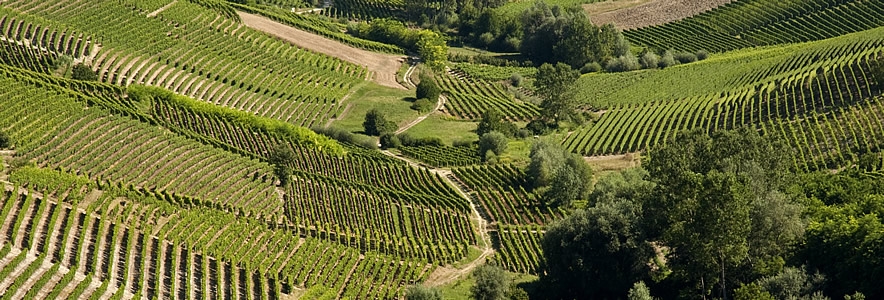
The Sorì Eroici
The map of Moscato d'Asti town halls
Click on the red square below to open the map of Moscato d'Asti town halls.

Popular content
Today's:
All time:
The territory
In Piemonte, the Moscato grapes are produced in a wide area, which covers a large part of the Cuneo, Alessandria and Asti provinces: the last two could possibly merge into one area Asti/Alessandria in the near future. Here, people have talked about Moscato since ancient times: the first information about the production of this wine dates from the 15th century and since that time the agricultural and economic reality of this sector has always had an extraordinary evolution.
Starting from Canelli and its surroundings, the production area was officially defined in 1932 thanks to the establishment of a new regulation, the “Disciplinare”. This is how the greatest and most recent history of this vine, “the Moscato bianco of Canelli”, began, with the wine production in the cellars, the birth of Moscato Champagne, the technological progress in oenological techniques and the necessary documentation of rules by the Protection Consortium.
In these fifty-two municipalities which are scattered around an area of about ten thousand hectares, there are almost five thousand agricultural companies which produce more than one million quintals of wonderful grapes every harvest. Peasant families that farm different soils: mild or steep hills, smooth slopes or prohibitive and fascinating flanks that testify the history and the hard work and represent sources of high production quality.
This land, which emerged from the sea a few million years ago and ranges in height from 150 to 650m, has special characteristics which when combined with the climate improves the taste of Moscato Bianco. The soil releases perfumes and flavours that give unique characteristics to the Moscato wines. These wines are now in great demand all over the world and are produced from wonderful vines, designated to become World Heritage.




